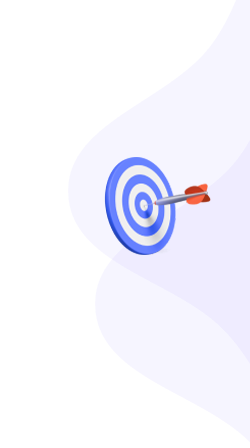Unveiling the Secrets: How Do I Scrape Data from a Website?
In an era where data reigns supreme, the ability to extract useful information from websites has become invaluable. This process, known as web scraping, is a technique employed to gather data from the internet automatically. Whether you’re a researcher, a business analyst, or simply someone with a thirst for knowledge, learning how to scrape data can open up a world of opportunities. In this article, we’ll explore the various facets of web scraping, from the technical aspects of data extraction using Python to the ethical considerations that must be taken into account.
Understanding Web Scraping
At its core, web scraping involves pulling data from websites and converting it into a structured format that can be analyzed. This is particularly useful for gathering large amounts of data from multiple pages, which would be tedious to collect manually. The data can range from product prices and user reviews to academic articles and social media posts.
There are a few methods to perform web scraping, each with its own advantages and disadvantages. Let’s delve into the more common techniques:
- HTML Parsing: This involves fetching the HTML content of a webpage and using libraries to parse and extract the desired information. Python libraries such as Beautiful Soup and lxml are popular choices for this method.
- APIs: Many websites offer official APIs (Application Programming Interfaces) that allow developers to request data in a structured format without scraping. This is a more straightforward and often more reliable method of data extraction.
- Web Crawlers: These are automated bots that traverse the web, indexing content as they go. They can be used for scraping by following links and gathering data from different pages on a site.
Getting Started with Python for Web Scraping
Python is often heralded as the go-to language for data extraction due to its simplicity and the powerful libraries available. Here’s a quick guide to help you get started with scraping using Python:
- Set Up Your Environment: Ensure you have Python installed on your system. Use pip to install the necessary libraries, such as
requestsfor fetching web pages andBeautiful Soupfor parsing HTML. - Fetch the Web Page: Use the
requestslibrary to retrieve the HTML content of the page you want to scrape. - Parse the HTML: With Beautiful Soup, you can navigate the HTML structure and locate the elements that contain the data you want.
- Extract the Data: Once you have identified the HTML tags and classes that hold the data, extract it and store it in a structured format, such as a CSV or a database.
This is a simplified process, but it highlights the foundational steps involved in web scraping. As you grow more comfortable, you can explore more complex techniques, such as handling JavaScript-rendered sites using tools like Selenium.
Scraping Tools and Libraries
There are numerous tools available to assist with web scraping. Here are some worth mentioning:
- Beautiful Soup: A Python library for parsing HTML and XML documents. It creates parse trees from page source codes that can be used to extract data easily.
- Selenium: Primarily used for automating web browsers, Selenium can also be utilized for scraping dynamic content that relies on JavaScript.
- Scrapy: An open-source and collaborative framework for extracting data from websites. It’s excellent for larger projects and offers features like data storage and handling multiple requests.
- Octoparse: A visual web scraping tool that requires no coding knowledge, making it accessible for beginners.
Ethical Scraping Practices
While the technicalities of data extraction are fascinating, it’s crucial to approach web scraping ethically. Here are some best practices to keep in mind:
- Respect Robots.txt: Most websites have a
robots.txtfile that outlines which parts of the site can be scraped. Always check this file before proceeding. - Avoid Overloading Servers: Scraping too frequently can cause strain on a website’s server. Implement delays between requests to minimize impact.
- Attribution: If you use data from a website, consider giving credit where it’s due. This fosters goodwill and respect within the online community.
- Legal Compliance: Always ensure that your scraping activities comply with the website’s terms of service and relevant laws.
Common Challenges in Web Scraping
Despite its many benefits, web scraping does come with challenges. Here are a few common ones:
- Changing HTML Structures: Websites often change their layout, which can break your scraping script. Regular maintenance is necessary.
- IP Blocking: If a website detects excessive scraping, it may block your IP address. Using rotating proxies can mitigate this issue.
- JavaScript-Rendered Content: Some sites require JavaScript to display data, which complicates scraping. Tools like Selenium are useful in these cases.
Frequently Asked Questions
1. Is web scraping legal?
Web scraping legality varies by jurisdiction and the website’s terms of service. Always check these before scraping.
2. What programming languages are best for web scraping?
Python is the most popular choice due to its rich ecosystem of libraries, but you can also use languages like JavaScript, Ruby, or PHP.
3. Can I scrape data from any website?
Not all websites permit scraping. Always review the robots.txt file and the site’s terms of service.
4. What is the difference between web scraping and data mining?
Web scraping is the process of extracting data from websites, whereas data mining involves analyzing and discovering patterns in large datasets.
5. How can I handle CAPTCHAs when scraping?
Some scraping tools offer features to bypass CAPTCHAs, but it’s best to avoid scraping sites that use them excessively.
6. What should I do if my scraper stops working?
Debug the code by checking for changes in the website’s HTML structure or any changes in the website’s anti-scraping measures.
Conclusion
In conclusion, mastering web scraping opens doors to a wealth of information and insights. With Python and the right tools, you can automate the collection of data that can inform your decisions, enhance your research, or drive business strategies. However, it’s essential to approach scraping with respect for the data sources and to adhere to ethical guidelines. By doing so, you can harness the power of data extraction responsibly and effectively.
For more detailed guidance on web scraping techniques, you can refer to resources like Real Python or consider utilizing tools such as Octoparse for a more visual approach. Happy scraping!
This article is in the category Digital Marketing and created by BacklinkSnap Team




